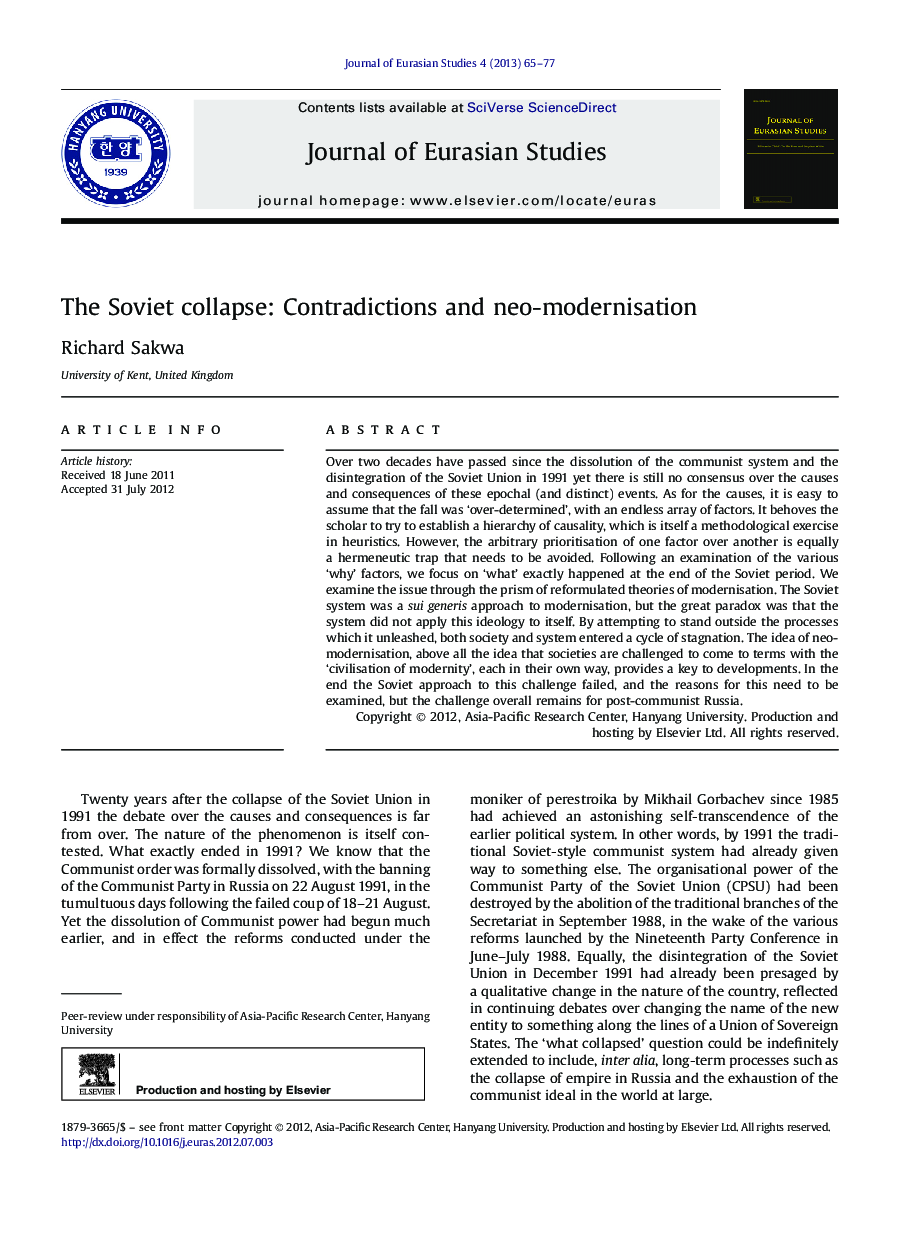| Article ID | Journal | Published Year | Pages | File Type |
|---|---|---|---|---|
| 1127276 | Journal of Eurasian Studies | 2013 | 13 Pages |
Over two decades have passed since the dissolution of the communist system and the disintegration of the Soviet Union in 1991 yet there is still no consensus over the causes and consequences of these epochal (and distinct) events. As for the causes, it is easy to assume that the fall was ‘over-determined’, with an endless array of factors. It behoves the scholar to try to establish a hierarchy of causality, which is itself a methodological exercise in heuristics. However, the arbitrary prioritisation of one factor over another is equally a hermeneutic trap that needs to be avoided. Following an examination of the various ‘why’ factors, we focus on ‘what’ exactly happened at the end of the Soviet period. We examine the issue through the prism of reformulated theories of modernisation. The Soviet system was a sui generis approach to modernisation, but the great paradox was that the system did not apply this ideology to itself. By attempting to stand outside the processes which it unleashed, both society and system entered a cycle of stagnation. The idea of neo-modernisation, above all the idea that societies are challenged to come to terms with the ‘civilisation of modernity’, each in their own way, provides a key to developments. In the end the Soviet approach to this challenge failed, and the reasons for this need to be examined, but the challenge overall remains for post-communist Russia.
